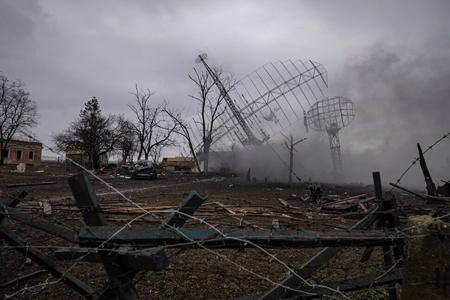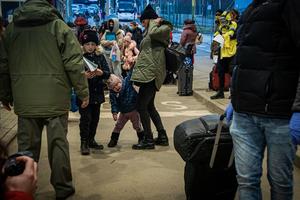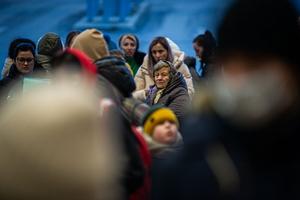Welcome to your weekly commentary and overview of news from Slovakia. Today, we are summing up Slovakia’s response to the war in Ukraine. Follow the updates on this page.
Find the PDF of the February issue of The Slovak Spectator below.
Most of Slovakia did not expect to wake up on Thursday morning to the terrible realisation that Vladimir Putin had started an all-out war just across its eastern border. Despite that, the country has proved it is prepared to play its part as a good neighbour and as a member of the international community.
These are the three main points that should be highlighted about Slovakia’s response so far:
A good neighbour
With numerous reports hinting at the possibility of a war in Ukraine, Slovakia’s authorities were aware and communicating to the public that the main effect that their country would need to bear was the arrival of people, in their thousands or tens of thousands, fleeing from the war.
Slovakia and its central-European partners within the Visegrad Group had acquired a negative image for their attitudes towards refugees since the 2015 crisis. This time around, their conduct has been exemplary: regardless of their political affiliation, Slovak government ministers have been telling people to show solidarity and humanity to Ukrainians fleeing the war. Meanwhile, Slovakia’s public has shown that it does not need to be told what to do: civic initiatives have mushroomed around the country as part of a massive surge of solidarity. Of course, the difference between the response in 2015 and the one we see today shows that there is a tendency towards rather selective solidarity – one that people in Slovakia need to talk about. But for now it is a time to act rather than to talk.
The Slovak government has changed the law to facilitate the asylum process, has proposed financial aid to compensate those who offer help, and has promised to take care of as many refugees as may come.
The authorities report that, so far, more than 30,000 people, mostly women and children, have crossed Slovakia’s border with Ukraine. Journalists on the ground report that there are enormous queues on the Ukrainian side, waiting to cross by car or on foot. Defence Minister Jaroslav Naď (OĽaNO), speaking on the TA3 TV news channel on Sunday, said that “if hundreds of thousands will come, we will take care of hundred of thousands, because this is not a question of comfort any more, it is a question of humanity.”
The Slovak Spectator has gathered information about crossing the border from Ukraine to Slovakia, which can be found here. The website ua.gov.sk provides more detailed information in Ukrainian about what awaits people directly at the border, and after their transition to Slovakia. The Slovak government also launched the pomocpreukrajinu.sk website with information about all available accommodation options. Another resource launched by several NGOs is ukraineslovakia.sk. All of these are available in Ukrainian.



 PM Eduard Heger at the border crossing from Ukraine on February 25, 2022. (source: SITA)
PM Eduard Heger at the border crossing from Ukraine on February 25, 2022. (source: SITA)


